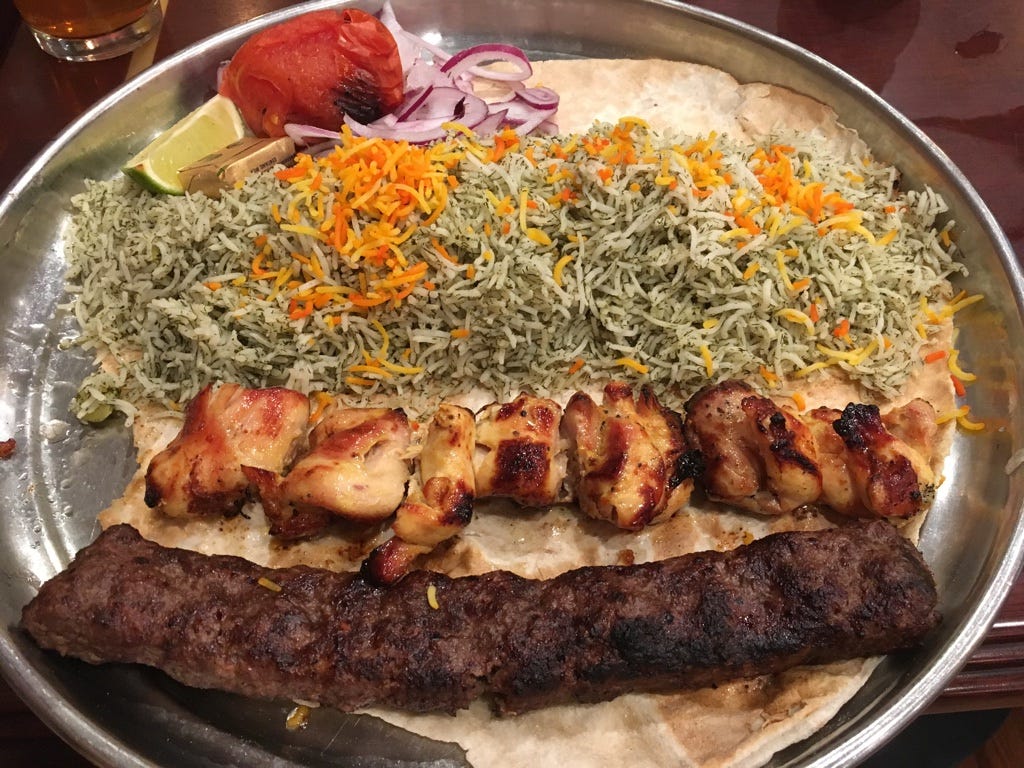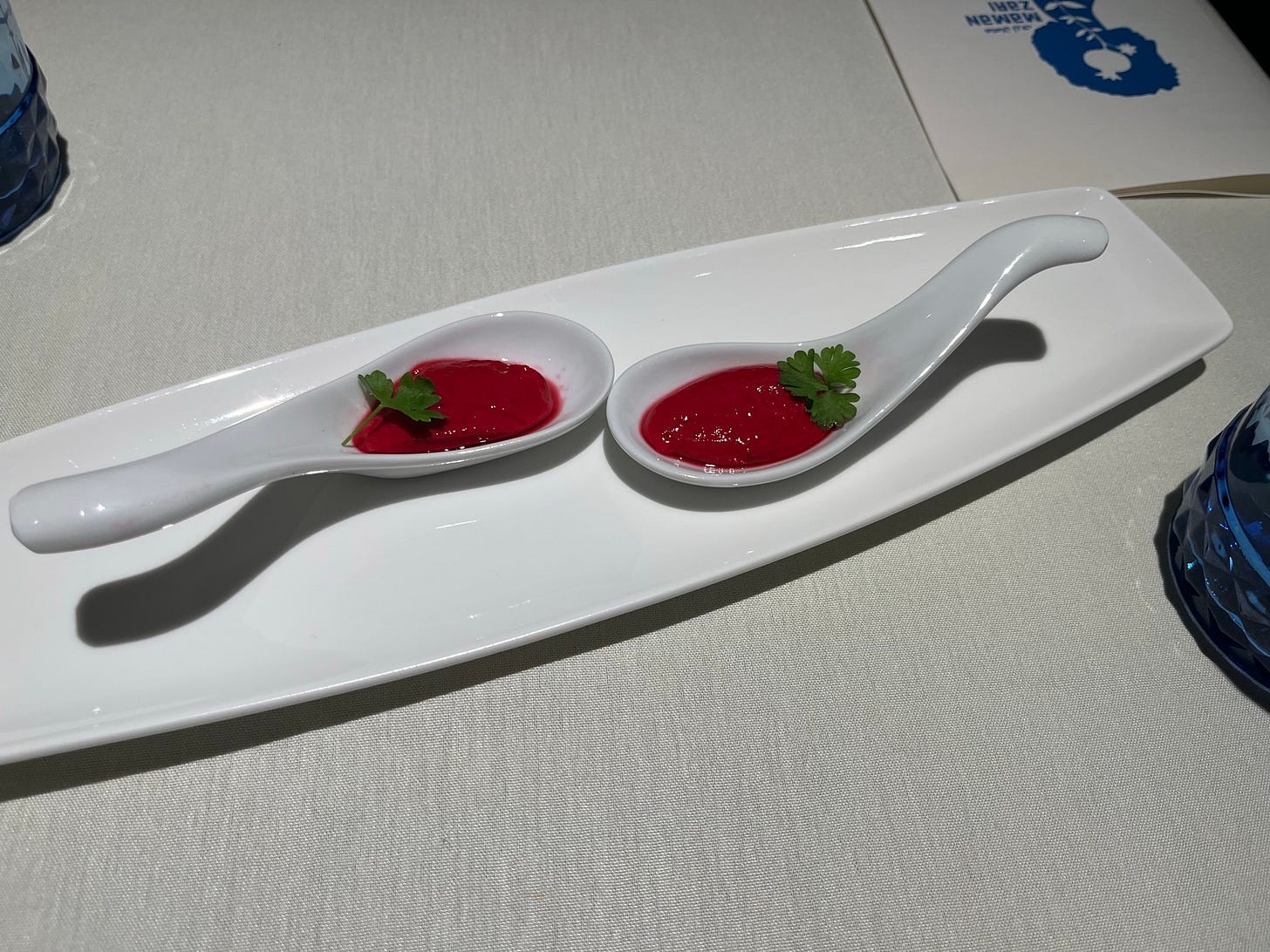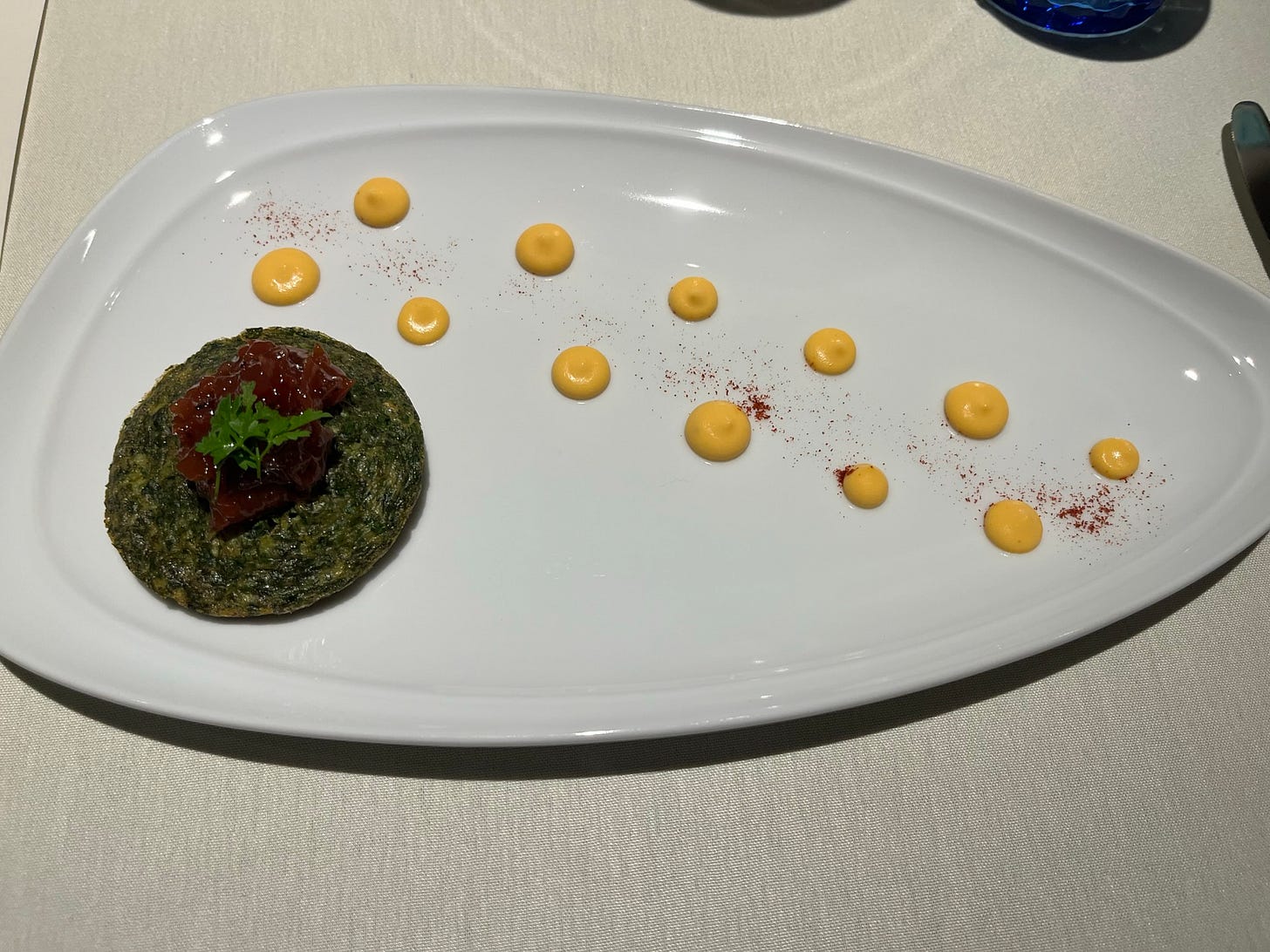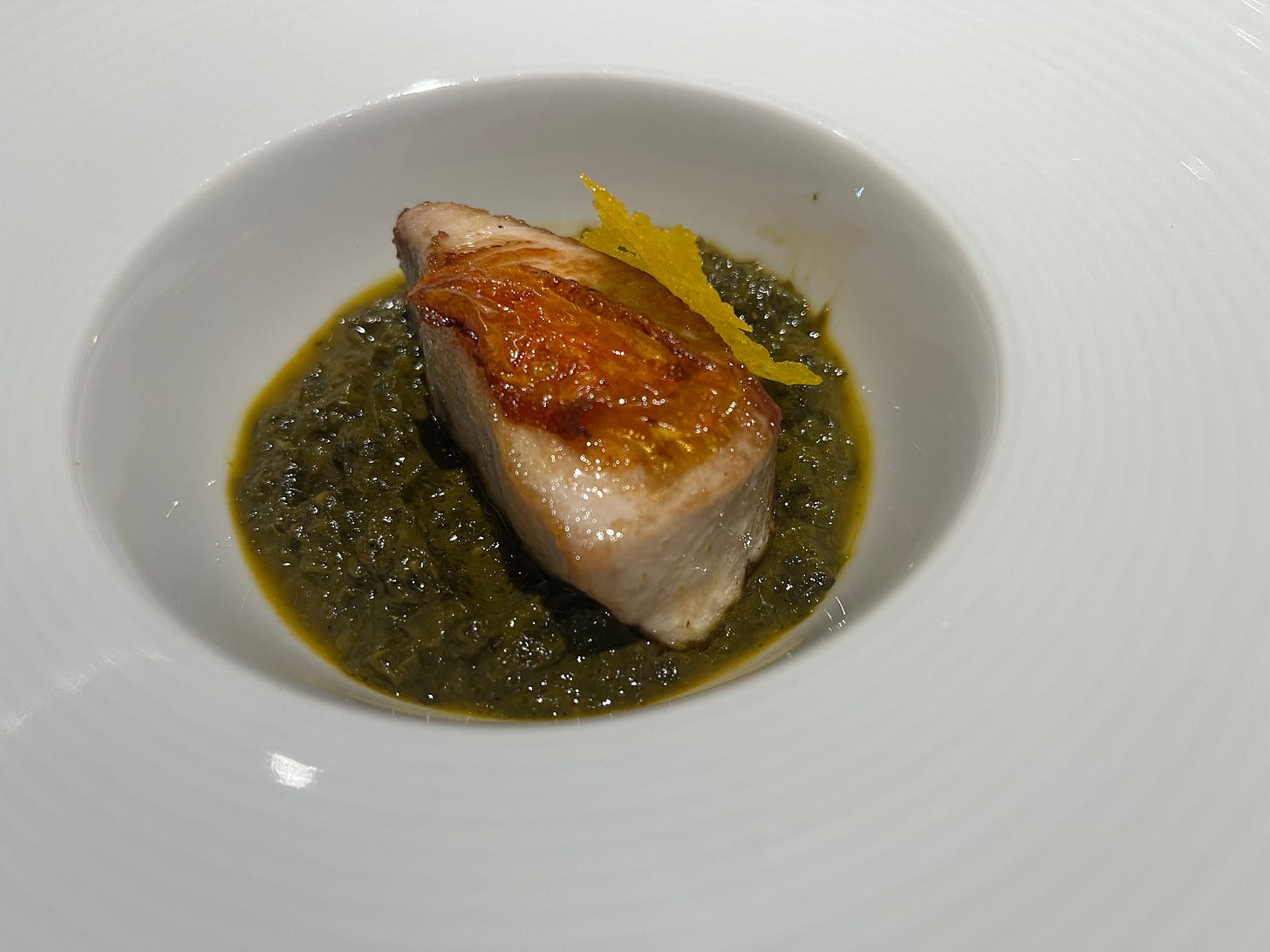Birthday dinner in Albany Park
Maman Zari is a curious twist on Persian cuisine
Map for this post (I’ll post a map for all posts where I think it’s relevant)
I turned 40 last month, and to be honest, it was one of the worst months I can remember. Not because I got older1, but because I was sick for most of it. My weight went down more than 10 lbs at one point, which if you know me in person should seem like a lot.
Luckily, the birthday dinner reservation that my wife and I made was early this month, and I had recovered somewhat by that time. We went to Maman Zari in Albany Park, right by the Brown Line Kedzie stop. This is a unique Persian tasting menu place. I’ll talk about the food in a bit, but I'll start by talking about the 2 other restaurants that we’d been in Albany Park because they’re relevant.
Albany Park that I know
I think of Albany Park as one of the more LA-like neighborhoods in Chicago. There’s a big Latino presence, and there’s also Korean food as well as Middle Eastern food. The cityscape is pretty flat with more than a few strip malls. There’s a lot going on here, and we honestly haven’t explored enough other than the Middle Eastern restaurants we know.
There’s 2 prominent Persian restaurants in Albany Park: Kabobi Grill and Noon O Kabob. I had an Iranian friend who was a Kabobi regular, and he would take us to Kabobi until he moved away a while back2. We’ve kept going there without him, ordering takeout during the early pandemic days, taking friends and family, etc. We’ve stuck to what we know in this case because what we know is excellent3. We haven’t been for about 2 years, which also means we haven’t been with our son, and we really want to go back.
The other restaurant we’d been to in Albany Park was a Lebanese restaurant called Semiramis. Our Lebanese-American friend wanted to have their kibbe (a patty-like dish of raw ground meat with bulgur), so a bunch of us went together. This seemed to be another great place, but it closed last year.
Maman Zari
I mention these places because Maman Zari is nominally a Persian restaurant like Kabobi and Noon O Kabob, and it’s the restaurant that replaced Semiramis.
One thing I thought as we entered the dining area was that it seemed like Semiramis was bigger. Looking at the photos of Semiramis, though, I think the difference is that Semiramis’s windows were bare, making it seem connected to the outside. Maman Zari has decorative screens on the windows, making it cozier if less open.
Some things you should know going in is that the chef here is Italian, learned Persian cooking from the restaurant owner’s family, and pretty clearly intends to make Persian food that isn’t what you get at places like Kabobi.
There were 8 courses—3 veggie, 3 meat, 2 dessert—but you would know that this was going to be very different from Kabobi even before the first course.
This was the beet amuse-bouche, i.e. not on the printed menu, that we were told to slurp like an oyster. It was a cool refreshing start to the dinner, and clearly not a traditional Persian dish.
Then the first course really made it clear what this experience was going to be like.
Kuku sabzi is apparently a Persian omelet with lots of herbs are mixed in. That’s what the green thing on the left is, and it was definitely an omelet with a strong aroma of Persian herbs, especially dill. But you can see that they geometrically arranged sauce as dots on the plate. There’s unmistakably Persian parts to the dish, but liberties are taken, and the presentation is right out of high-end Western restaurants.
The highlight for me was ghalieh mahi4, the fish course to start the meat section.
When white fish is cooked perfectly, it seems to leave a big impression on me, maybe because it’s often done badly. This was perfect, and made me realize that mahi mahi is actually very tasty if you cook it right. The sauce reminded me of saag without the hot-spicy, which is curious because I don’t think the ingredients are similar.
This course was paired with Classique Dry Riesling from Forge Cellars in Finger Lakes, New York. One, I was surprised that there’s this good of a Riesling from New York State. Two, Riesling with spiced-up white fish is an amazing combination.
Their menu changes with the season, so if you go in the spring or later, you might see very different things. $85 per person is pretty expensive for the neighborhood, but not compared to all the tasting menu places closer to downtown. I thought the food was unique and interesting and good, and worth the trek and the price of admission.
Final thoughts:
Note to self: You don’t need to finish all the wines when you do a wine pairing.
Note to everyone: You don’t need to finish all the food when you do a tasting menu.
What I’m listening to now
This is electronic music, but it’s not what you think when you hear that. It’s melodic, sometimes almost orchestral, and very moody.
Daniela Pes is Italian, from the island of Sardinia. The lyrics sounded almost like Italian but not exactly, so I assumed at first that she was singing in Sardinian. It turns out that she just made up a language, with Italian and Gallurese (a Sardinian dialect) as inspiration.
I’ll probably have a short post before the end of the year. But if not, Happy New Year!
I don’t care that much about birthdays to begin with.
He had a bad experience at Noon O Kabob once, apparently, but don’t let that stop you from trying it.
An amazing side note: The mahi here apparently has nothing to do with mahi mahi. From the Wikipedia page on mahi mahi: “The name mahi-mahi comes from the Hawaiian language[4] and means 'very strong', through the process of reduplication.[5] By chance in Persian, mahi (ماهی) means 'fish', but the word mahi in Hawaiian has nothing to do with the Persian language.”





I see that there was a review of Maman Zari that came out just when I was writing my post.
Between the reviewer's 2nd visit and our visit, it appears they changed the wine pairing so that a red goes with the 5th course.
https://www.chicagomag.com/chicago-magazine/january-2024/review-maman-zari-charms-with-its-persian-tasting-menu/